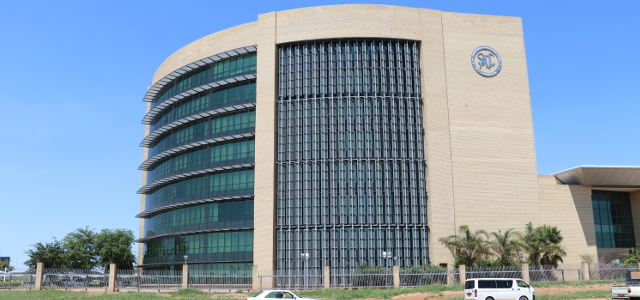SADC is a regional economic community comprising 16 Member States; Angola, Botswana, Comoros*, Democratic Republic of Congo, Lesotho, Madagascar, Malawi, Mauritius, Mozambique, Namibia, Seychelles, South Africa, Swaziland, Tanzania, Zambia and Zimbabwe. The headquarter is based in Gaborone, Botswana.
GWP Southern Africa Senior Technical Advisor Andrew Takawira explains that SADC sees GWP as an organisation that allows them to reach beyond the government actors that they usually deal with – GWP brings in partners that SADC wouldn’t ordinarily engage with. “Initially, the relationship was around promoting Integrated Water Resources Management (IWRM) in the region, with GWP also being involved in some of the IWRM planning. Now, GWP Southern Africa implements a number of activities within the SADC IWRM plan, which is called the Regional Strategic Action Plan (RSAP) on IWRM, currently in phase IV.”
One of the key activities is the WEF Nexus Approach, which is a programme that is being funded by the European Union. GWP supports SADC in implementing two main objectives:
- Developing a nexus framework that will drive the nexus thinking in the region – how can the three sectors of water, energy and food work together?
- Identifying nexus investments that the region will prioritize
Phera Ramoeli is the SADC Senior Programme Officer in charge of transboundary water management, and Head of the Water Division: “Transboundary water management is an important subject that SADC coordinates and facilitates implementation of various programmes in that context".
Ramoeli explains that the SADC region is one of four regions in the world that are currently being run as pilot projects for WEF nexus thinking on global scale. The SADC programme in is being driven through a dialogue process, bringing together stakeholders - to talk, understand and agree on what it takes for the three sectors to work together. In this video Ramoeli describes the process:
In the GWP Southern Africa office, Technical Advisor Kidanemariam Jembere manages the GWP-side of the WEF programme for the SADC region. He explains that the work process started in January 2017, with an inception phase. They consulted with as many stakeholders as possible in the SADC development community – different institutions that have relevance for the nexus work and also the member states of SADC:
“We looked at how the nexus approach is perceived in the SADC region, which is very important for us, because we need to know the mindset of the different actors in the region.”
In this video Jembere describes the process to date – what happened, where they are now, and next steps:
Dr. Kenneth Msibi, Water Policy and Strategy Expert with SADC, says that the collaboration with GWP on the WEF programme is already making good progress and he acknowledges that partly through working with GWP, things happen at a high level:
"From technical meetings, we have already reached very high political levels. For instance, last July we had a workshop – an investment conference where the energy and water ministers came together – and the Chair of SADC at the time, who was the King of the Kingdom of Swaziland - in his opening speech, for the first time at the level of a Head of State, he said that we should work within a nexus framework.”
In this video, Dr. Msibi talks about the impact of GWP in the SADC region:
*Comoros was confirmed as the 16th SADC member state in August 2017
The project “Fostering Water, Energy and Food Security Nexus Dialogue and Multi-Sector Investment in the SADC Region” is carried out with funding by the European Union.

